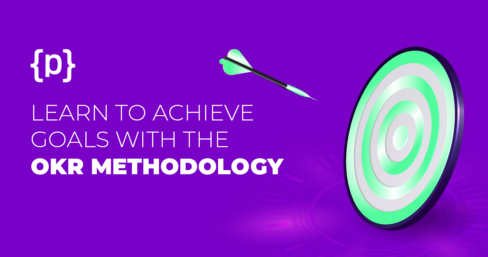The Agile Strategic Technology Planning enables the survey of the technological characteristics of a company and the identification of essential improvement points allied to the business interests in a structured way, prioritizing more agile deliveries through intelligent and efficient methods, generating positive impacts in its completion, focused on the success and growth of the company.
What is agile strategic planning?
In an extremely competitive market, it is necessary to plan even better, quickly, and effectively, and agile strategic planning has been one of the tools used by companies to ensure the success of the entire business operation and protect business amidst crises and instability to act practically and assertively, focused on its short and long-term objectives and goals.
In this planning, the organization’s internal and external conditions and its expected evolution are evaluated, helping in decision-making, identifying opportunities, and reducing the distance between the company’s current condition and where it intends to be in a given period.
The importance of agile strategic planning
An agile strategic technology planning needs to be close to all departments of the corporation, attentive to the profile of customers, knowing market trends, and being aware of competitive threats. It needs to promote more efficient processes, more transparent and fluid communication, simplify routines, automate tasks and ensure the development of innovative and integrated services. It involves a change in the work model and even in the company’s culture.
Working through the agile methodology, the company finds it easier to meet market demands, reduce uncertainties with short development cycles and well-defined deliveries with a focus on continuous process improvement and team alignment, making it much simpler to identify errors and failures during its execution, where the professionals involved gain more flexibility and ease to make adaptations, preventing problems from affecting the final result in order to deepen the relationship with partners and increase sales.
Competitive advantages
This powerful management tool brings important competitive advantages, acting through indicators to monitor results with long-term visions and also cross-referencing with short-term objectives, results, and initiatives, transforming forecasts into measurable parameters of efficiency:
■ Facilitates the achievement of business objectives more transparently and effectively.
■ Optimizes resource allocation through adaptability and flexibility.
■ Explains risks and proposes ways to mitigate them in the short term, reducing costs, failures, and rework.
■ Simplifies flows and increases communication transparency through the interaction of the entire team.
■ Directs the organization’s resources towards more effective management through more assertive deliveries.
■ Helps the business to accommodate new priorities and market demands, making work more efficient.
■ Increased security with well-defined processes and people in charge, improving the organization’s credibility and reliability.
■ Increases team productivity and project prioritization through greater team alignment.
■ Contributes to more assertive decision-making, based on up-to-date and reliable information, through well-evaluated and detailed scenarios.
■ Brings more competitive advantage to the business and greater profitability based on efficiency and speed in obtaining results.
For agile strategic technology planning to be successful, the company’s mission must be clear from the start, highlighting the points it intends to deliver to sustain change and the business as a whole.
A business diagnosis is carried out with an analysis of the internal environment, its strengths, and weaknesses. With the information obtained, the Priorities, Objectives, and Key Results (OKRs) must be listed, defining short, medium, and long-term tactical and operational plans.
Within agile strategic technology planning, success depends on everyone’s involvement with the roles and responsibilities of those who will execute and manage each activity. The clarity of the goals and their indicators is essential to measure the achievement of the desired levels, all within the resource allocation plans.
Having agile strategic planning allows the creation of a roadmap and a long-term vision with a cross-referencing of short-term objectives, results, and initiatives. Through the objectives being monitored and even revised in shorter periods, it allows for agile behavior to adapt to changes, much more than just following a plan.
Do you have any questions? Contact our team! We are ready to deliver the best solution for you and guide your projects towards success!
Felipe Rebello is Head of Growth EMEA at Performa_IT – Talk to him: https://www.linkedin.com/in/rebello/
Visit our website: https://performait.com/?idioma=en









